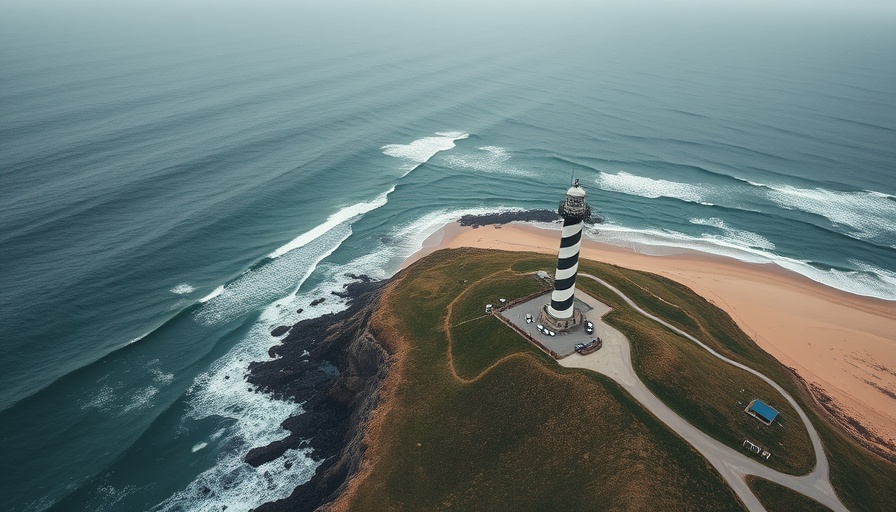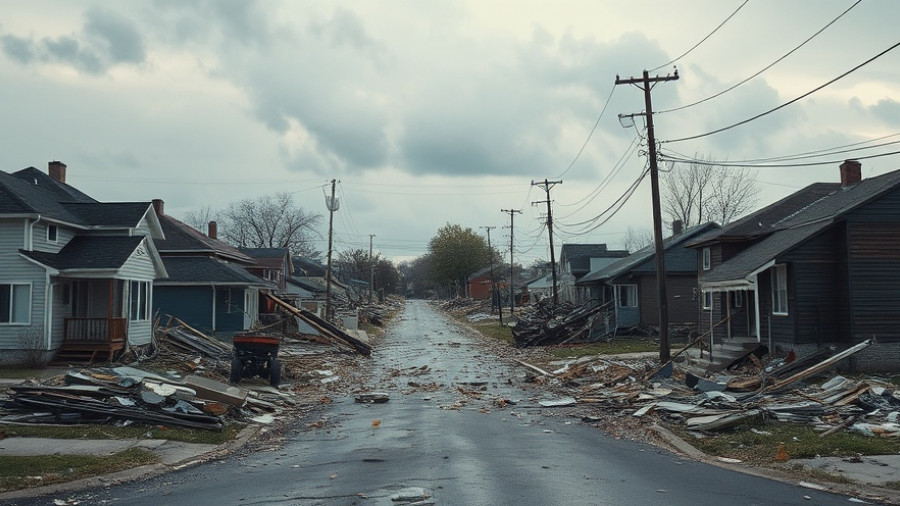
Understanding Hurricane Erin's Impact on the Outer Banks
This week, Hurricane Erin is on track to bring hazardous conditions to North Carolina’s Outer Banks, as even though it remains hundreds of miles offshore, it threatens to unleash waves of over 20 feet. Coastal residents face the grim reality of potential isolation as officials have ordered evacuations for Hatteras and Ocracoke islands. The fragile connection of N.C. 12, a single highway to these barrier islands, is in jeopardy of being washed out, cutting off access for both residents and vacationers.
The Fragility of the Outer Banks' Infrastructure
The T-shirt that proclaims “One road on. One road off (sometimes)” reflects the fundamental relationship between the Outer Banks and their residents’ frequent encounters with Mother Nature. This week’s developments highlight how vulnerable the region's infrastructure is, especially N.C. 12, which serves as the only lifeline for these communities. The reality is stark; the road has previously seen considerable damage from storms, with millions invested annually in repairs and maintenance to keep it functional. Given the increasing severity of storms due to climate change, how long can this vital route withstand the relentless forces of nature?
Evacuations and the Future of Local Tourism
With evacuations ordered, the question looms over the 3,500 permanent residents and the tens of thousands of tourists who flock to the Outer Banks. The local economy, heavily reliant on tourism, generates over $2 billion annually. When access is cut off, the financial implications are profound, impacting not only immediate businesses but also long-term recovery and resilience planning.
The Role of Climate Change in Erosion Rates
While storms play a significant role in the wear and tear of these barrier islands, it is the underlying issue of climate change that poses an ongoing threat. Rising sea levels lead to accelerated erosion, further endangering infrastructure like N.C. 12. Research shows that the Outer Banks have been steadily losing land due to both natural and human-induced factors, raising alarms about the sustainability of future development in the area.
Insights for Property Owners and Insurers
For vehicle owners and property owners on the Outer Banks, understanding the insurance claim process is critical, especially when disaster strikes. If N.C. 12 is rendered unusable, vehicle and property damage claims will inevitably surge. Knowing how to file a claim efficiently can mitigate financial losses. To avoid denied insurance claims, it’s essential to document all damages promptly, work with your insurance adjuster transparently, and familiarize yourself with the claims timeline.
Guidelines for Navigating the Claims Process
In the wake of storms and potential property damage, vehicle owners must prepare for the bureaucracy entailed in filing an insurance claim. This includes obtaining necessary documentation, understanding claim negotiation tips, and knowing rights in dealing with insurers. This proactive attitude is vital to ensure a smooth recovery process.
A Call to Action for Residents
As Irma approaches, it’s time for Outer Banks residents to consider their plans for evacuating and protecting their properties. Whether you’re a resident or a visitor, remain informed about weather updates, understand the implications for insurance claims, and prepare for the potential impacts of isolation. Take action now to safeguard your property and be ready should the worst occur.
Conclusion: Bridging Understanding and Preparedness
Mother Nature has a daunting influence on the Outer Banks, as the struggle between human infrastructure and natural forces continues. For residents, the key lies not just in understanding the immediate threats posed by hurricanes like Erin but also in being proactive about the necessary preparations and protections in place, especially concerning insurance claims for any potential damages. Stay informed, stay prepared, and protect your rights and property as these challenges evolve.
 Add Row
Add Row  Add
Add 




Write A Comment